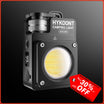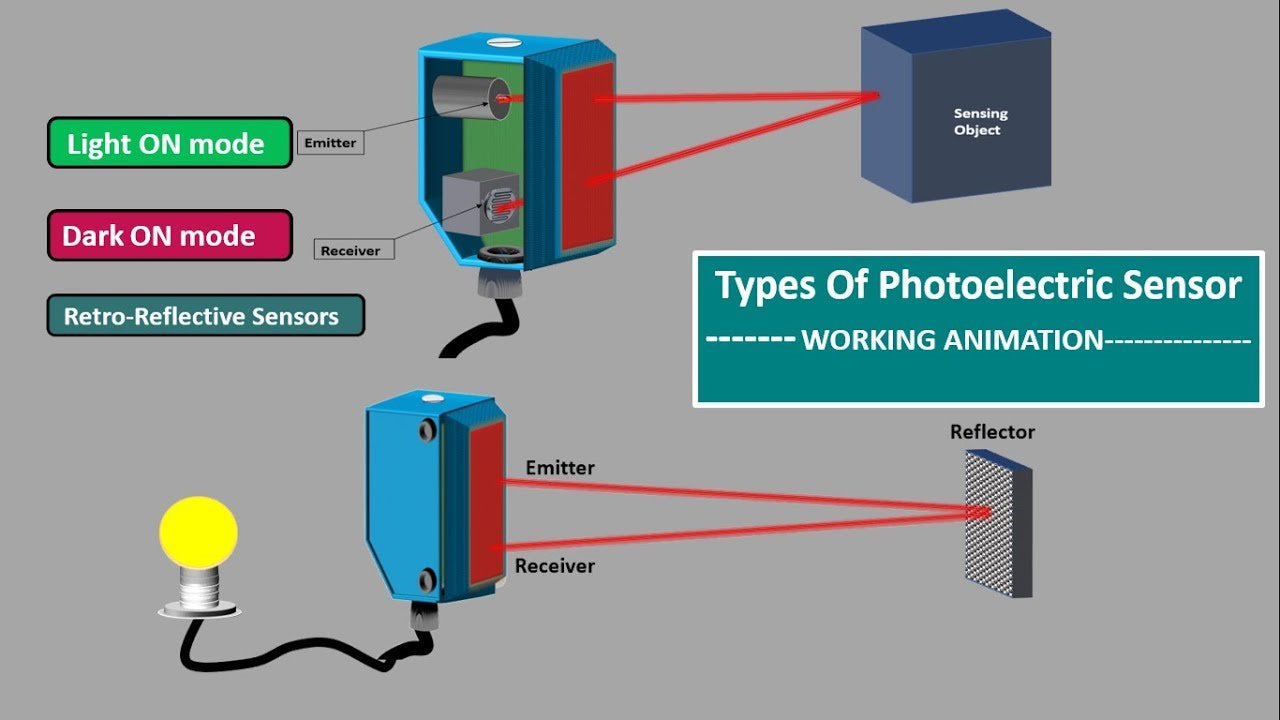Photosensors, also known as light sensors, are devices that detect light and convert it into an electrical signal. These devices play a crucial role in various applications, from consumer electronics to industrial automation and environmental monitoring. In this blog, we will delve into the working principles of photosensors, their types, applications, and the future of light-sensing technology.
How Photosensors Work
At the heart of a photosensor's operation is the ability to detect light and convert it into an electrical signal. This process typically involves several steps:
-
Light Absorption: The photosensor absorbs photons from a light source. This light source could be natural sunlight, artificial lighting, or any other form of visible or invisible light.
-
Photoelectric Effect: When photons strike the photosensitive material within the sensor, they transfer their energy to the electrons in the material. This transfer of energy can cause electrons to become excited and move to a higher energy state.
-
Generation of Electric Current: The movement of these excited electrons generates an electric current. The magnitude of this current is proportional to the intensity of the light that the sensor absorbs.
-
Signal Processing: The generated electric current is then processed by the sensor's circuitry. This processed signal can be used to trigger an action, measure light intensity, or provide data for further analysis.
Types of Photosensors
Photosensors come in various types, each designed for specific applications and working on different principles. The most common types include:
1. Photovoltaic Cells
Photovoltaic cells, commonly known as solar cells, convert light directly into electricity using the photovoltaic effect. When light hits the semiconductor material in the cell, it creates electron-hole pairs, generating a current. These cells are widely used in solar panels to harness solar energy.
2. Photodiodes
Photodiodes are semiconductor devices that convert light into an electrical current. They operate in reverse bias, where the current generated is directly proportional to the intensity of the light. Photodiodes are used in a variety of applications, including light meters, optical communication devices, and safety equipment.
3. Phototransistors
Phototransistors are similar to photodiodes but offer higher sensitivity due to their amplification capabilities. When light strikes the base of the phototransistor, it generates a current that is amplified by the transistor. Phototransistors are used in applications requiring higher sensitivity, such as remote controls and light-activated switches.
4. Photoresistors (LDRs)
Photoresistors, or Light Dependent Resistors (LDRs), change their resistance based on the amount of light falling on them. In darkness, they exhibit high resistance, and in the presence of light, their resistance decreases. LDRs are commonly used in light-sensing circuits, such as automatic lighting systems.
5. Charge-Coupled Devices (CCDs)
CCDs are used primarily in imaging applications, such as digital cameras and astronomy. They consist of an array of photodiodes that capture light and convert it into an electrical signal. This signal is then processed to form an image.

Applications of Photosensors
Photosensors have a wide range of applications across different industries. Here are some notable examples:
1. Consumer Electronics
Photosensors are integral to many consumer electronics. For instance, they are used in smartphones for adjusting screen brightness based on ambient light. Cameras use photosensors for capturing images, while remote controls rely on infrared sensors to communicate with devices.
2. Automotive Industry
In the automotive industry, photosensors are used in various systems, including automatic headlights, rain-sensing windshield wipers, and parking assist systems. These sensors enhance safety and convenience for drivers.
3. Industrial Automation
Photosensors play a crucial role in industrial automation. They are used in manufacturing processes for detecting the presence or absence of objects, measuring distances, and controlling robotic systems. Light curtains, which use arrays of photosensors, ensure safety by detecting any interruption in the light beam.
4. Environmental Monitoring
Photosensors are used in environmental monitoring to measure parameters such as sunlight intensity, UV radiation, and pollution levels. These measurements are essential for studying climate change, monitoring air quality, and managing natural resources.
5. Healthcare
In healthcare, photosensors are used in various diagnostic and therapeutic devices. For example, pulse oximeters use light sensors to measure blood oxygen levels, while phototherapy devices use controlled light exposure to treat skin conditions.

Future of Photosensors
The future of photosensor technology looks promising, with advancements in materials science, nanotechnology, and integration techniques driving innovation. Here are some trends and potential developments:
1. Enhanced Sensitivity and Accuracy
Advances in materials, such as perovskite and quantum dots, are expected to enhance the sensitivity and accuracy of photosensors. These materials can improve the efficiency of light absorption and conversion, leading to more precise measurements.
2. Miniaturization and Integration
As technology advances, photosensors are becoming smaller and more integrated with other electronic components. This miniaturization opens up new possibilities for wearable devices, medical implants, and other compact applications.
3. Internet of Things (IoT) Applications
Photosensors will play a crucial role in the IoT ecosystem, enabling smart lighting, environmental monitoring, and security systems. The integration of photosensors with IoT devices allows for real-time data collection and remote monitoring.
4. Artificial Intelligence (AI) and Machine Learning
The combination of photosensors with AI and machine learning algorithms can lead to more intelligent and adaptive systems. For example, smart cameras can use AI to analyze images in real time, enabling applications such as facial recognition and automated quality control.
Conclusion
Photosensors are indispensable components in modern technology, enabling a wide range of applications from consumer electronics to industrial automation and environmental monitoring. Understanding how these sensors work and the different types available helps in selecting the right sensor for a specific application. As technology continues to evolve, photosensors will become even more advanced, leading to new and innovative uses in various fields. Whether you are a hobbyist, engineer, or scientist, keeping up with the latest developments in photosensor technology will open up new possibilities for your projects and research.




















![[BOGO] Hykoont LS018 Multi-Function 2 in 1 Flashlight Portable Extendable Adjustable Brightness CCT Bright](http://hykoont.com/cdn/shop/files/STDG18_02986949-cd58-4695-b253-ff6d94f8776a.jpg?v=1762425901&width=104)













Leave a comment
This site is protected by hCaptcha and the hCaptcha Privacy Policy and Terms of Service apply.